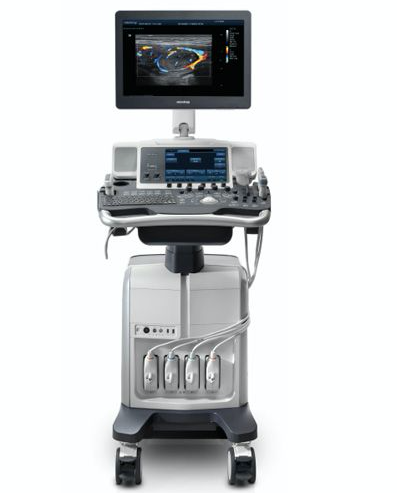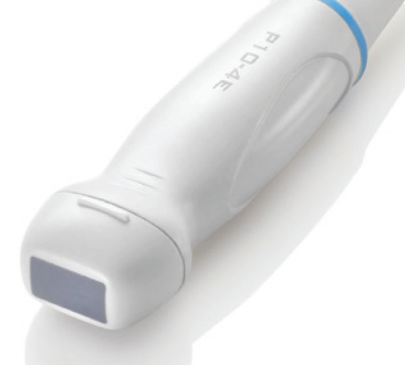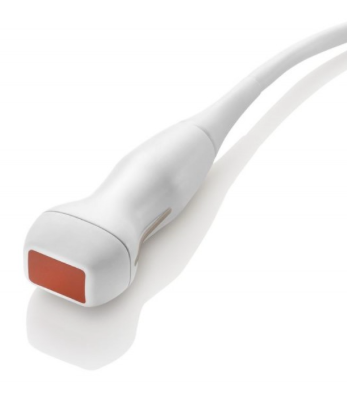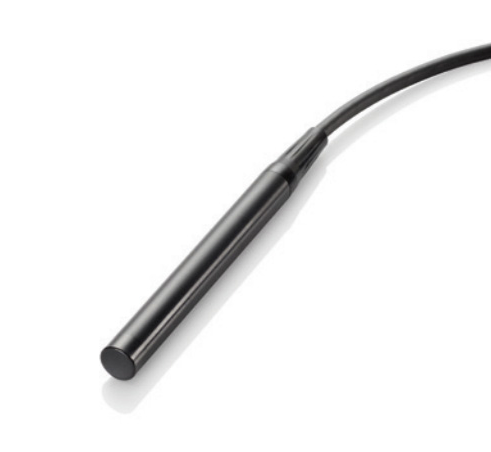
Mindray DC-8 Ultrasound System
Mindray's DC-8 premium shared service 3D / 4D (live 3D) ultrasound system is one of Mindray's most popular systems. There are a few factors that contribute to this popularity: Cutting-edge image enhancing technology, versatility, and advanced Single Crystal probe compatibility.
Mindray seemed to have had their competition in mind when engineering technology for the DC-8, because it compares and is even more respected than many other comparable ultrasound systems (whether it be GE, Philips, or Samsung). Using 3D/4D imaging to enhance women's health image applications (including OB-GYN), Ultra Wideband Processing, and HR Flow Vessel Visualization, it compares to top system that specialize in women's health (like the GE Voluson series). It also employs iClear Speckle Reduction technology, iBeam Compound Imaging, and iNeedle Needle Enhancement Software, just to name a few more options.
Most other ultrasound systems, if engineered particularly powerfully for ultrasound imaging, tend to be specialty systems. The Philips iE33, for example, is known to be extremely advanced, but specializes in Cardiac applications. Mindray's DC-8, on the other hand, is a Shared Service system, projecting high quality images for Cardiac, Abdominal, OB-GYN, Urological, and Vascular applications - just to name a few. The combination of state-of-the-art technology, along with versatility concerning ultrasound applications puts the DC-8 in a league of its own.
Finally, the speciality single crystal probes that the DC-8 is compatible with is truly special. The particular probes that the DC-8 is compatible with are called T3 probes. These new transducers are single-crystal probes, which are coupled with its T3 transducer technology. This provides better penetration at higher frequencies, which increases overall image resolution.
Ultrasound Features and Specificities:
- 19" high resolution LCD monitor with articulating arm
- 10.4" color touchscreen
- Ergonomic design with swivel-and-rotate user interface
- 4D real-time 3D obstetric imaging
- 3T transducer technology
- Single-crystal transducers
- Ultra wideband processing
- HR Flow vessel visualization
- iClear Speckle Reduction Technology
- iBeam Compound Imaging
- RAW data processing for post processing
- iWorks automated workflow
- iScape panoramic imaging
- iTouch automatic image optimization
- iNeedle needle enhancement software
- DICOM and structured reporting
- Elastography
- AutoIMT automated Intima-Media Thickness
Compatible Ultrasound Probes / Transducers:
- Mindray SC5-1e Curved Array Probe
- Mindray D6-2e 3D/4D Curved Array Probe
- Mindray C11-3e Curved Array Probe
- Mindray C7-3e Curved Array Probe
- Mindray C5-2e Curved Array Probe
- Mindray L14-6we Linear Array Probe
- Mindray L12-3e Linear Array Probe
- Mindray L7-3e Linear Array Probe
- Mindray L14-6ne Linear Array Probe
- Mindray SP5-1e Phased Array Probe
- Mindray P7-3e Phased Array Probe
- Mindray P10-4e Phased Array Probe
- Mindray DE10-3E 3D/4D Endocavitary Probe
- Mindray CB10-4e Endocavitary Probe
- Mindray V11-3we Endocavitary Probe
- Mindray V11-3e Endocavitary Probe
- Mindray P7-3te TEE Probe
- Mindray CW2s CW Pencil Probe
- Mindray CW5s CW Pencil Probe
F.A.Q.
The Mindray DC-8 is actually compatible with more than 20 different ultrasound probes / transducers! That being said, the type of probes it is compatible include the following:
- Convex / Curved Abdominal Probes
- Linear / Vascular Probes
- Phased / Sector Cardiac Probes
- Curved Endocavitary / Vaginal Probes
- TEE Transesophageal Probes
- Continuous Wave / Pencil Probes
- Hockey Stick / Intraoperative Probes
The DC-8 is capable of producing 3D / 4D (or Live-3D) images for OB-GYN / abdominal applications as well as Cardiac applications
Actually, part of what doctors adore about the DC-8 is the fact that it is a shared service system, and specializes in a variety of applications including Cardiac, OB-GYN, Breast, Abdominal and Vascular applications.
Absolutely. The DC-8 supports DiCom and structured reporting




